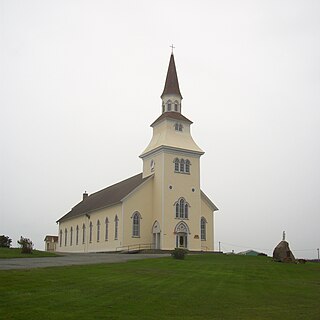
Annapolis County is a county in the Canadian province of Nova Scotia located in the western part of the province located on the Bay of Fundy. The county seat is Annapolis Royal.
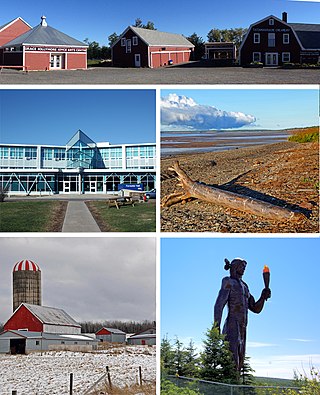
Colchester County is a county in the Canadian province of Nova Scotia. With a population of 51,476 the county is the fourth largest in Nova Scotia. Colchester County is located in north central Nova Scotia.
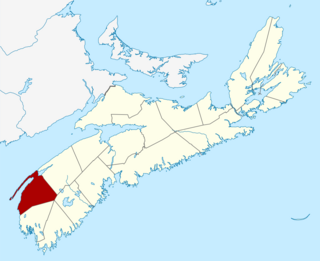
Digby County is a county in the Canadian province of Nova Scotia.
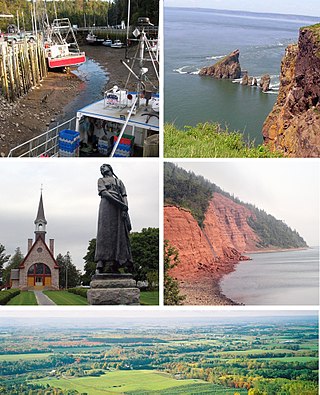
Kings County is a county in the Canadian province of Nova Scotia. With a population of 62,914 in the 2021 Census, Kings County is the third most populous county in the province. It is located in central Nova Scotia on the shore of the Bay of Fundy, with its northeastern part forming the western shore of the Minas Basin.

Pugwash is an incorporated village in Cumberland County, Nova Scotia, Canada, located on the Northumberland Strait at the mouth of the Pugwash River. It had a population of 746 as of the 2021 census. The name Pugwash is derived from the Mi'kmaq word, Pakwesk meaning "a shoal", in reference to a reef near the mouth of the harbour.

Mahone Bay is a town on the northwest shore of Mahone Bay along the South Shore of Nova Scotia in Lunenburg County. A long-standing picturesque tourism destination, the town has recently enjoyed a growing reputation as a haven for entrepreneurs and business startups. The town has the fastest growing population of any municipality in Nova Scotia according to the 2016 census, experiencing 9.9% population growth.
Chéticamp is an unincorporated place on the Cabot Trail on the west coast of Cape Breton Island in Nova Scotia, Canada. It is a local service centre. A majority of the population are Acadians. Together with its smaller neighbour, Saint-Joseph-du-Moine, Chéticamp makes up the largest Francophone enclave on Cape Breton Island. The 2006 population was 3,039 people.
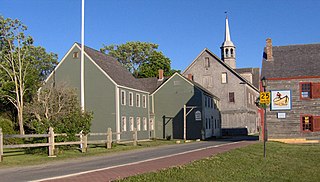
Shelburne is a town located in southwestern Nova Scotia, Canada.
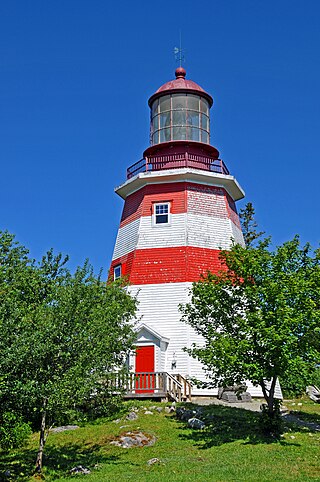
Barrington, officially named the Municipality of the District of Barrington, is a district municipality in western Shelburne County, Nova Scotia, Canada. Statistics Canada classifies the district municipality as a municipal district.
Shubenacadie is a village located in Hants County, in central Nova Scotia, Canada. As of 2021, the population was 411.
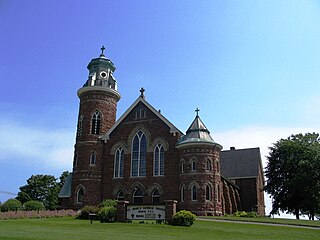
Souris is a town in Kings County, Prince Edward Island, Canada. It is located near the northeastern tip of the province.

District of Shelburne, officially named the Municipality of the District of Shelburne, is a district municipality comprising the eastern section of Shelburne County, Nova Scotia, Canada, but does not include the Towns of Shelburne or Lockeport. Statistics Canada classifies the district municipality as a municipal district. It is home to the Bowers Meadows Wilderness Area.
Meteghan is an Acadian fishing community along the shores of Baie Sainte-Marie in Clare municipality, Digby County, Nova Scotia, Canada. It is 25 miles northeast of Yarmouth.

St. Marys Bay south western Nova Scotia, Canada, is surrounded by the modern municipal districts of Clare Municipal District and Digby.

Digby, officially named the Municipality of the District of Digby, is a district municipality in Digby County, Nova Scotia, Canada. Statistics Canada classifies the district municipality as a municipal district.

Ambroise-Hilaire Comeau was a merchant and political figure in Nova Scotia, Canada. He represented Digby County in the Nova Scotia House of Assembly from 1890 to 1907 as a Liberal member. He is the first Canadian Senator of Acadian descent from Nova Scotia. His name appears in some sources as Ambrose H. Comeau.
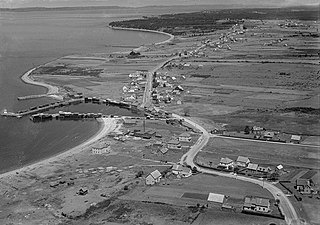
Belliveau Cove is a historical Acadian community in the Canadian province of Nova Scotia, located in the District of Clare in Digby County settled in 1768 on un-ceded Mi'kmaq territory. A major centre of wooden shipbuilding in the 19th and early 20th century, Belliveau Cove built the second largest wooden ship ever constructed in Canada, the County of Yarmouth in 1884. It is now a mixed community of citizens with diverse backgrounds, including Acadians.
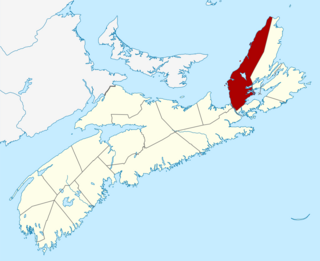
The Municipality of the County of Inverness is a county municipality on Cape Breton Island, Nova Scotia, Canada. It provides local government to about 17,000 residents of the historical county of the same name, except for the incorporated town of Port Hawkesbury and the Whycocomagh 2 Miꞌkmaq reserve, both of which are enclaves. Public services are provided in the areas of recreation, tourism, administration, finance, and public works.












